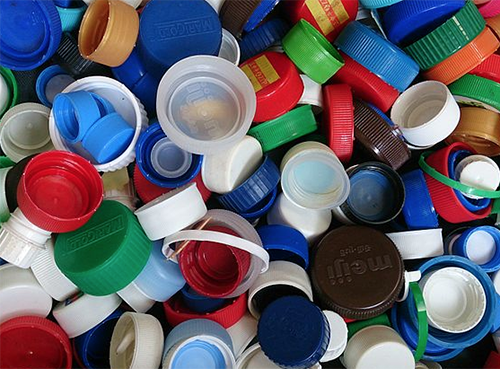All Materials
Adhesives
Adhesives are substances capable of surface bonding [1]. Food contact adhesives are used in labels or stickers, for closures in single-use packaging; and to glue paper and paperboard cartons, and corrugated fiberboard layers. They may be in direct contact with food (such as on individually stickered produce) or have indirect contact (such as on the outside of packaging) [1, 2].
Broadly, adhesives can be classified into several categories: vinyl-based, acrylic, polyurethane, natural polymers (including animal protein, starch, and cellulose), and thermoplastic hotmelt [3].
However, most adhesives also contain intentionally added chemicals that provide antioxidant, tackifying, biocidal, plasticizing, thickening, and other functionalities, depending on the application [3]. Additives can include chemicals and materials of concern such as phthalate plasticizers. Additives can pose health and environmental concerns. Adhesive additives can migrate into food from their original use in food contact materials or from recycled content that carries forward chemical additives used in adhesives in the virgin material, such as corrugated board [2].
Material Preference
Thousands of different chemical compounds are used in adhesives, and most have little to no regulations concerning their use in food contact applications [4]. Germany has led in the effort to regulate food contact adhesives [5]; however, only a few have gone through robust toxicology evaluations in the US [4, 6].
Preferred adhesives will have some or all of the following characteristics:
- They avoid low molecular weight compounds (<1000 Da), which migrate more readily
- They do not contain phthalates or other additives of concern
- Additives are evaluated for food contact safety
References
[1] Toenniessen, M. (2007). Packaging Materials: 10. Adhesives for Food Packaging Applications. In ILSI Europe Report Series (pp. 1–40).
[2] Geueke, B., Groh, K., & Muncke, J. (2018). Food packaging in the circular economy: Overview of chemical safety aspects for commonly used materials. Journal of Cleaner Production, 193, 491-505. https://doi.org/10.1016/j.jclepro.2018.05.005
[3] Canellas, E., Vera, P., & Nerín, C. (2015). Risk assessment derived from migrants identified in several adhesives commonly used in food contact materials. Food and chemical toxicology, 75, 79-87. https://doi.org/10.1016/j.fct.2014.10.029
[4] Galbiati, E., Jacxsens, L., & De Meulenaer, B. (2021). Hazard prioritisation of substances in printing inks and adhesives applied to plastic food packaging. Food Additives & Contaminants: Part A, 1-19. https://doi.org/10.1080/19440049.2021.1954701
[5] www.productip.com/kb/productipedia/compliance-resources/adhesives-and-food-contact-materials-(fcm) Accessed Nov. 1st, 2021.
[6] Zimmerman, L. Hazard prioritization of printing inks and adhesive substances (2021) Food Packaging Forum.
See full list of resources here.
Information last updated: 10/28/2021


